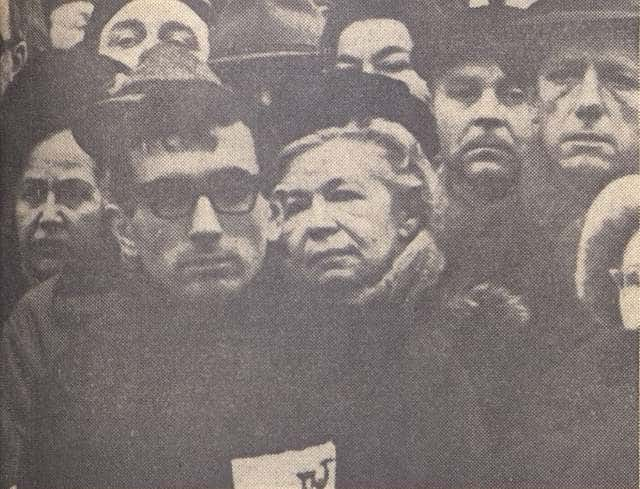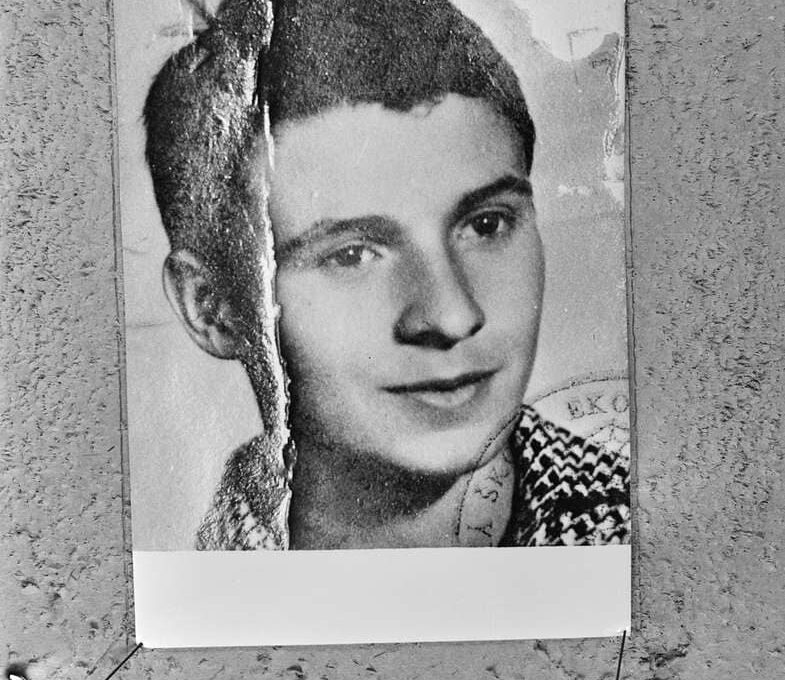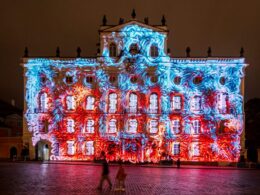Obsah Zobrazit
Název Jan Palach vynikl jako symbol odvahy a odporu v těžkých dobách československého povstání proti sovětské okupaci v 60. letech. Komunismus v Československu nakonec padl díky tomu. Jan Palach nezištný čin, který vyvolal vlnu šoku v celé zemi.
Tento mladý student položil život za svou zemi ve svých dvaceti letech. Na protest proti represivní sovětské diktatuře se 16. ledna 1969 upálil na pražském Václavském náměstí. Palach zůstal odhodlaný v boji za demokracii a svobodu, i když prožíval nesnesitelná muka.
Český lid se inspiroval k povstání proti autoritářské vládě, když ohromil národ svým sebeupálením. V důsledku protestů a demonstrací, které Palachova oběť vyvolala, získala věc svobody a demokracie obrovskou podporu.
Dokonce i po jeho smrti, Český mučedník Jan statečnost pokračovala. Jeho příklad povzbuzuje každého, aby bojoval za spravedlnost bez ohledu na to, jak obtížná situace nastane. Všichni, kdo bojují za svobodu a spravedlnost, si s sebou nesou jeho odkaz statečnosti a obětavosti.
Kdo byl Jan Palach: Příběh českého mučedníka

Jan Palach byl český učenec, který se stal tváří odporu proti československému režimu. Sovětská okupace Československa v roce 1968. Palach, který se narodil 11. srpna 1948 v Praze, vyrůstal v těžkém období, kterému dominoval komunistický režim v Československu. Vystudoval historii a politickou ekonomii na Univerzitě Karlově v Praze, kde v něm narůstalo rozčarování z autoritářského systému.
Zásadní zlom v Palachově životě nastal v srpnu 1968, kdy do Československa vtrhli vojáci Varšavské smlouvy, aby potlačili reformy Pražského jara. Invaze zmařila sny o demokracii a prosadila tvrdou komunistickou vládu nad zemí. Palach byl ztrátou svobody a tvrdým potlačením opozice velmi rozrušen a cítil se nucen jednat.
16. ledna 1969, Český mučedník Jan uskutečnil demonstraci, která se odrazila v celém Československu i mimo něj. Na pražském Václavském náměstí se zapálil jako symbolický akt odporu proti komunistické diktatuře a sovětské okupaci. Navzdory vážným popáleninám žil Palach tři dny, než 19. ledna 1969 svým zraněním podlehl.
Palachovo sebeupálení zemi ohromilo a vyvolalo značné rozhořčení jak na domácí, tak na mezinárodní úrovni. Jeho pohřeb 25. ledna 1969 se stal velkým protivládním pochodem, na němž tisíce truchlících uctily jeho hrdinství a oběť. Palachův čin vzdoru vyvolal novou vlnu odporu proti komunistickému systému a posílil odpor proti sovětské brutalitě.
V následujících letech, Jan Palach se stal symbolem odporu a mučedníkem za svobodu a demokracii. Jeho odkaz je v české společnosti stále oslavován, jsou po něm pojmenovány ulice, náměstí a památníky. Vyprávění Jana Palacha je střízlivou připomínkou lidských obětí totality i pokračujícího boje za svobodu a spravedlnost.
Pochopení hořícího odkazu Jana Palacha a jeho protestního činu
Hořící Jan Palach se v roce 1969 ozýval nejen po celém Československu, ale i po celém světě, a vytvořil tak plamenný odkaz, který je dodnes uctíván a připomínán. Palachovo rozhodnutí upálit se na Václavském náměstí bylo víc než jen zoufalý akt vzpoury; bylo to cílevědomé a promyšlené gesto, které mělo vyburcovat svědomí národa a vzbudit ducha odporu proti tyranské komunistické diktatuře a sovětské okupaci.
Palachův čin, motivovaný hlubokým pocitem zoufalství a vzteku po invazi vojsk Varšavské smlouvy v roce 1968, byl jak individuální obětí, tak kolektivní výzvou k akci. Palach doufal, že zvolením tak dramatického a násilného způsobu protestu vyvede společnost z letargie a lhostejnosti a donutí ji čelit kruté realitě sovětské nadvlády a úpadku svobody a demokracie.
Palachovo sebeupálení nebylo impulzivním činem, ale spíše metodicky naplánovaným aktem vzpoury. Ve dnech předcházejících jeho protestu napsal několik dopisů a prohlášení, v nichž vysvětloval své pohnutky a vyzýval k solidaritě v boji proti totalitě. Jeho ochota položit život za věc svobody svědčila o jeho neochvějné oddanosti ideálům demokracie a lidských práv.
Palachův protest měl hluboký a okamžitý dopad. Jeho sebeobětování vyvolalo novou vlnu odporu proti komunistickému systému a přimělo nespočet dalších lidí, aby se ozvali proti nespravedlnosti a útlaku. Jeho pohřeb, který se stal hlavní protivládní demonstrací, byl důležitým bodem obratu v dějinách Československa a signalizoval obnovenou touhu odmítnout sovětskou nadvládu a bojovat za demokratické reformy.
Pohřeb Jana Palacha znamená národní smutek
Pohřeb Jana Palacha v lednu 1969 symbolizoval kolektivní smutek a odmítnutí komunistického režimu a sovětské okupace v Československu. Palachův pohřeb byl silným vyjádřením nespokojenosti a podpory lidu poté, co jeho sebeupálení na Václavském náměstí o několik dní dříve šokovalo národ a vyvolalo protesty.
Na stránkách Pohřeb Jana Palacha v Praze se stal velkým protivládním protestem s tisíci truchlících. Navzdory pokusům státu omezit shromáždění se spojili jednotlivci ze všech společenských vrstev, aby uctili Palachovu památku a protestovali proti režimu.
Palachův pohřební průvod Prahou byl smutný, truchlící nesli transparenty, květiny a svíčky. Zpochybňovali diktaturu a požadovali svobodu a demokracii, mnozí nedbali vládního zákazu veřejných shromáždění.
Studenti a aktivisté nesli Palachovu rakev s vlajkou na znamení československé solidarity v těžkých chvílích. Palach byl po velkém smutečním a vzdorovitém shromáždění pohřben na Olšanském hřbitově.
Tvrdá reakce vlády na Palachův pohřeb podnítila nesouhlas a posílila československé odhodlání. Smuteční hosté se odmítli nechat umlčet nebo zastrašit pořádkovými silami a bezpečnostními jednotkami.
Po Palachově pohřbu se režim setkal s mezinárodním odsouzením a domácími nepokoji, což vyvolalo volání po politických reformách a ukončení sovětské vlády. Palachova smrt byla tragická, ale jeho pohřeb inspiroval novou generaci aktivistů k boji proti tyranii a pronásledování.
Jak oběť Jana Palacha otřásla světem a vyvolala další vlnový efekt
Jan Palach 1969 sebeupálení na protest proti komunistické vládě v Československu mělo celosvětový i domácí ohlas. Na stránkách následky smrti Jana Palacha byly:
Globální pozornost
Sebeupálení Jana Palacha, který se postavil proti sovětské invazi do Československa, vyvolalo mezinárodní mediální ohlas a politické diskuse ve východní Evropě.
Odolnost
Palachova oběť inspirovala hnutí solidarity a protesty po celém světě. Jeho odvážné gesto inspirovalo bojovníky za svobodu a lidská práva i v jiných zemích, které se potýkají se srovnatelnými překážkami.
Dopad na českou společnost
Palachovo sebeupálení přivedlo Čechy rozrušené sovětskou okupací k soucitu. Jeho hrdinství inspirovalo Čechy k požadavku politické svobody a k boji proti autoritářství.
Vládní represe
Československá vláda po Palachově smrti zatýkala a věznila aktivisty a zvýšila cenzuru a monitoring. Odpor, který Palachova oběť vyvolala, byl neuhasitelný.
Katalyzátor změn
Palachova statečnost inspirovala bojovníky za svobodu a demokracii k odporu a vytrvalosti. Jeho smrt podnítila odpor proti sovětské vládě a vedla k Pražskému jaru 1968.
Odkaz odvahy
Odkaz Jana Palacha ukazuje sílu individuální odvahy a oběti proti nespravedlnosti. Jeho neochvějná oddanost svým zásadám inspiruje generace aktivistů a účastníků kampaní po celém světě, aby se i v zoufalství postavili za to, co je správné.
Vzpomínka a památka
V České republice i mimo ni jsou památníky, pomníky a kulturní akce, jako např. muzeum komunismu v Praze oslavit Jana Palacha a jeho vyprávění pro budoucí generace. Jeho odkaz bojovníka za svobodu a demokracii je povzbuzením pro ty, kteří bojují za lepší svět.
Vliv na umění a kulturu
Palachova oběť inspirovala mnoho literárních, výtvarných a filmových děl, která umocnila jeho poselství a rozšířila jeho příběh. Jeho tvůrčí díla nadále povzbuzují ostatní k boji proti útlaku a tyranii.
Úvaha o historii
Smrt Jana Palacha vyvolává otázky o historii Československa a boji východní Evropy za demokracii. Jeho statečné jednání nám připomíná oběti, které přinesl za svobodu a spravedlnost, a varuje před autoritářstvím a tyranií.
Památník Jana Palacha jako symbol vzdoru a paměti
Po Palachově předčasné smrti byl postaven bronzový kříž na žulové desce jako jednoduchý, ale působivý památník. Památník, který nese Palachovo jméno a datum sebeupálení, zve návštěvníky k uctění památky statečného mladého muže, který zemřel za spravedlnost.
Na stránkách Memoriál Jana Palacha uctívá Palachův vzdor a inspiruje zastánce lidských práv a politické svobody. Památník se postupem času stal symbolem českého odporu proti útlaku a houževnatosti českého národa.
Na stránkách Jan Palach Památník také informuje budoucí generace o Palachových obětech za svobodu a demokracii. Památník pomáhá budoucím generacím připomínat si Palacha prostřednictvím komentovaných prohlídek, vzdělávacích programů a vzpomínkových aktivit.
Na stránkách Memoriál Jana Palacha uctívá statečného mladého muže, který bojoval proti tyranii a nespravedlnosti, a nabízí naději a vzpomínku. Návštěvníci z celého světa se na tomto místě pokloní jeho památce a připomenou si sílu lidských činů, které mohou inspirovat ke změně, a význam toho, že je třeba se postavit za správnou věc, a to i proti zdánlivě nepřekonatelné přesile.
Působivý film, který odhaluje životní příběh Jana Palacha
"Hořící keř" je silný film o tom. Jan Palach, mladého českého studenta, jehož sebeupálení v roce 1969 symbolizovalo odpor proti diktatuře. Film režisérky Agnieszky Holland sleduje Palacha od vysokoškolského studenta až po národního mučedníka a osvětluje nestálé politické klima v Československu pod sovětskou vládou.
Děj filmu se odehrává v období Pražského jara, kdy Sovětský svaz a jeho spojenci brutálně potlačovali demokratické reformy. Po Pražském jaru byla česká společnost plná strachu a útlaku, protože obyvatelé se snažili žít pod utlačovatelskou diktaturou. "Film Hořící keř tuto atmosféru působivě vykresluje prostřednictvím dramatického příběhu a strhujících hereckých výkonů.
Film Jana Palacha se soustředí na Jana Palacha, kterého s hloubkou a jemností ztvárnil Viktor Zavadil. Palach divákům ukazuje vnitřní utrpení mladého kluka, kterého nespravedlnost dohání k zoufalým činům. Palach uvažuje o tom, že se na protest proti sovětskému převratu upálí, a film zkoumá jeho charakter a psychologické a emocionální dopady jeho činů na něj samotného i na ostatní.
Po Palachově smrti byla česká společnost pobouřena a rozhořčena, jak ukazuje "Hořící keř". Film ukazuje seismický dopad Palachova sebeupálení na národní povědomí, od rozsáhlých pražských protestů až po vládní represe.
"Hořící keř" je oceněním Jan Palach a mnoha dalších, kteří zemřeli za svobodu a demokracii, s dramatickým příběhem a skvělou režií. Palachova síla a odhodlání divákům připomínají, že jednotlivci mohou změnit svět a dát naději i v těch nejtemnějších podmínkách.





